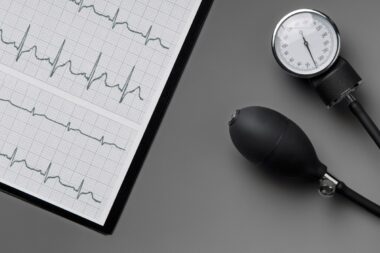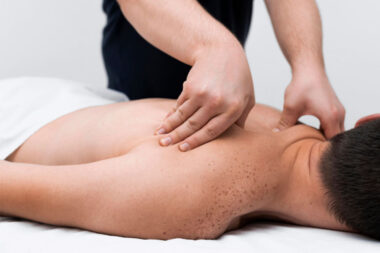The birth process is complex, where multiple factors come into play for the safe delivery of a baby. Unsafe delivery practices most often result in a birth injury. It may occur due to the intense physical pressure on the baby during labor. Damage may also occur if the baby lies in an abnormal position within the birth canal before or during labor. Therefore, strict vigilance before, during, and after childbirth is essential to prevent adverse events.
With the rapid advancement in medical technology, severe birth injuries are now becoming infrequent. An ultrasound allows for the pre-birth assessment of the baby to ensure its safety. Advanced procedures such as the baby’s delivery through a cesarean section have qualified for the safe delivery of high-risk cases, which would otherwise have been very complicated via normal delivery.
Minor birth injuries generally resolve on their own, while some severe injuries may result in significant complications which would impact the baby for the rest of its life.
Some common birth injuries are discussed below:
1. Cerebral Palsy
Cerebral palsy is characterized by deficient motor development, muscular weakness, and spasms. It may result from injury to the brain during labor. Doctors and medical professionals are trained to effectively conduct the delivery process and identify any risk factors which may make the baby susceptible to an injury.
Some care practitioners might be negligent in the service they provide, causing injuries to the mother and the baby. If medical negligence is suspected or ascertained, Birth Injury Justice Center can be consulted for assistance.
Cerebral palsy is detected in a baby at the beginning of infancy when the parents note an abnormal posture or involuntary movements of limb stiffness. Cerebral palsy is not treatable, and its management involves lifelong therapy.
2. Facial Paralysis
In cases where instrumental delivery techniques are used, such as forceps delivery or vacuum extraction, the facial nerve is most susceptible to damage. The baby will be unable to move a part of the face. Actions such as smiling and the ability to close the eyes will be affected. The newborn baby exhibits facial nerve injury upon crying, with the face looking asymmetric or lop-sided.
Damage to the facial nerve requires no treatment; the baby will get better in a few months.
3. Brachial Plexus Injuries
The brachial plexus is a bunch of nerves that spread from the spine to the neck, shoulder, and upper limbs. Damage to the brachial plexus may occur during a complicated delivery when one or both of the arms of the baby are overstretched. In some cases, mild injury results from extensive nerve stretching, while the nerves are torn in severe cases. Often brachial plexus injury occurs when the baby’s shoulder gets stuck within the birth canal during labor.
Injury to the brachial plexus results in weakness or paralysis in one or both arms. In brachial plexus injuries, it is essential that extensive stretching of the arm is avoided to allow the nerves to heal. A mild form of injury usually heals spontaneously in a matter of days. However, severe injuries may linger for 1-2 weeks, requiring intense physical and occupational therapy.
In some cases where the condition remains unresolved, surgery may be beneficial.
4. Hemorrhage
Due to the forces and pressure, the baby’s skull is subjected to during its expulsion from the birth canal; bleeding may occur between the layers covering the brain. This bleeding is called hemorrhage. The two most common types of bleeding are subdural and subarachnoid hemorrhage.
Subdural hemorrhage frequently occurs in cases where an operative technique is employed during deliveries. Though the baby remains symptomless in some instances, some show signs of unconsciousness, irritability, and breathlessness.
Subarachnoid bleeding occurs below the innermost membrane that surrounds the brain. The baby shows signs of seizures and lethargy, but these are short-lasting. Most cases resolve in time, and the baby thrives well.
Newborns that suffer from bleeding are monitored in the neonatal intensive care unit, where supportive care is provided. Management of a hemorrhage is based on the location and extent of the bleeding. Surgery for the removal of blood may be required in severe cases, where bleeding causes severe clinical signs.
5. Hypoxic-ischemic encephalopathy
Hypoxic-ischemic encephalopathy results from an insufficient oxygen supply to the baby’s brain. An unborn baby gets oxygen and nutrition through the mother’s umbilical cord. If this mechanism is disrupted during labor, the delivery of oxygen to the baby is compromised.
Without oxygen, the brain cells suffer irreversible damage resulting in neurological impairments. The baby may suffer from long-lasting functional and mental challenges for a lifetime.
A baby born with hypoxic-ischemic encephalopathy has often restricted growth. It is essential that care providers are vigilant and immediately identify any alterations in the normal vital functions of the baby during labor. After delivery, the baby must be resuscitated instantly so that the impact of brain injury can be limited. Rapid action and management may prevent long-term disability.
Conclusion
Most birth injuries can be avoided through routine pre-birth assessments of the mother and the unborn baby. Care providers must know about birth injuries to prevent their occurrence. However, suppose the delivery has entered a critical or dangerous phase, and the damage cannot be avoided to save the life of the baby.
In that case, the care providers should try their best to negate the harm the baby or the mother will receive as much as they can. If they have avoided a major injury, minor damages can be cured later.
Hope this article can be of help. Happy Reading.
This article is published by our independent team of health and wellness pundits that publish original and informative content to empower readers to take charge of their health and embark on a physically, mentally, and emotionally balanced lifestyle.





































